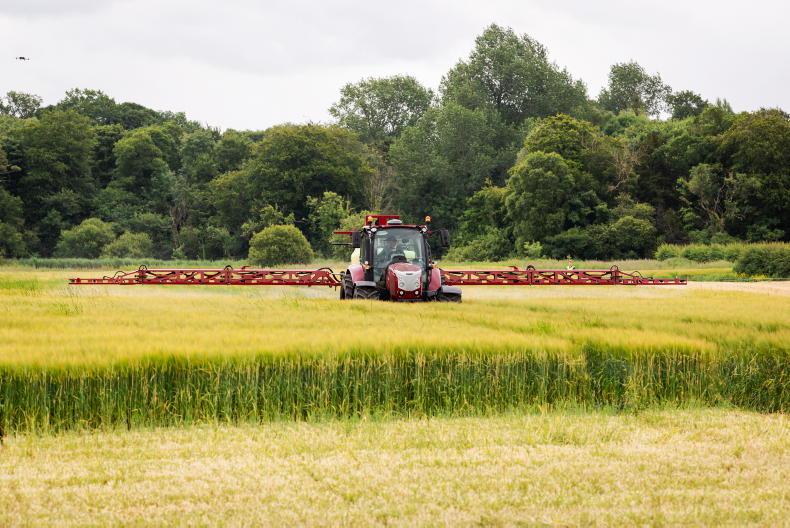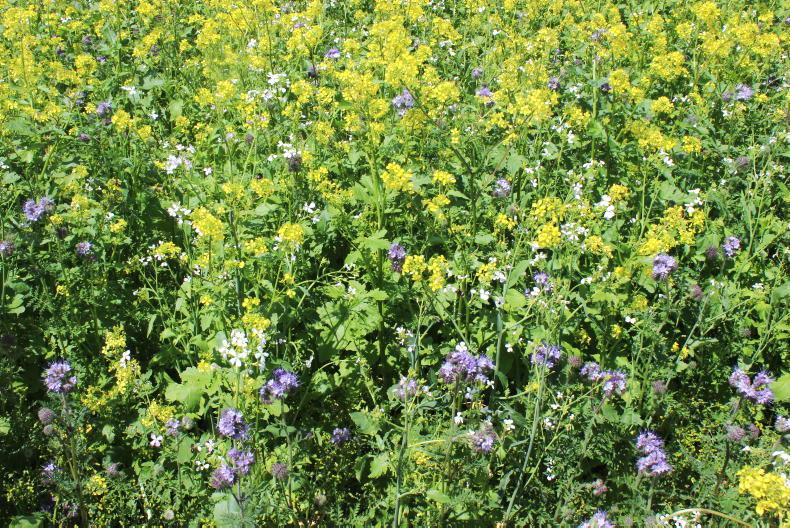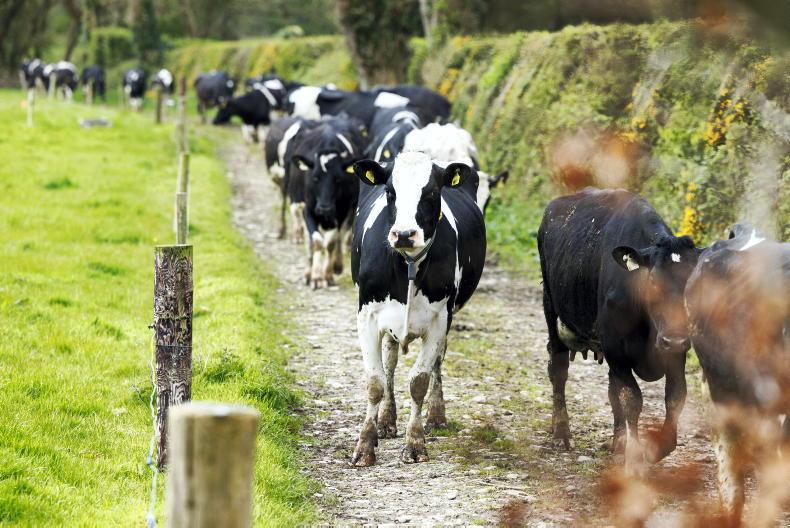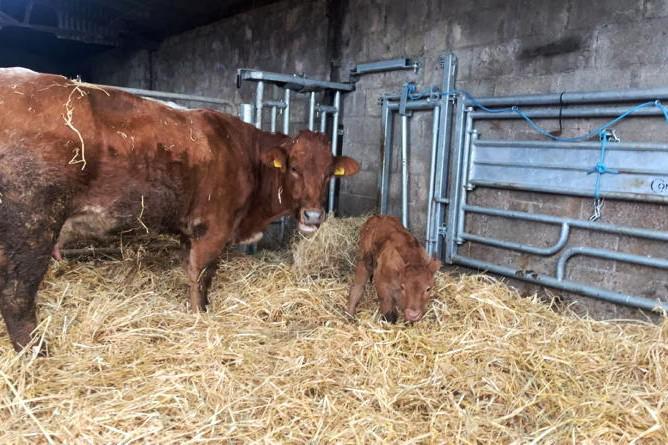As we face into another winter of farmers being less than comfortable with their fodder stocks, it is unbelievable to see that the Department of Agriculture has not made changes to nonsensical rules around the grazing of forage and catch crop rules since 2023.
Last year saw a mess unfold.
The CAP explanatory handbook was published in late May. It was published online, farmers were not sent a physical copy. It unveiled catch crop rules which, for many, were never heard before and which differed from those which farmers heard from Teagasc in the springtime at tillage seminars.
The rules basically rendered the grazing of catch crops unviable at the time. It placed the store lamb trade at serious risk. It also undid hard work which saw more relationships between livestock and tillage farmers develop to grow fodder crops and bring animals onto tillage farms which is an ideal example of sustainable farming from an economic, environmental and social point of view.
The original rules required:
A 3m grass margin around the perimeter of the field.An extension of the 3m margin at a watercourse to a 4m margin.An adequate lie-back.In spring/summer the rules changed to:
A grass lie-back the same size as the forage crop area was required.The rule to plant grass in the margins of grazed forage crops changed to a requirement to be cultivated stubble with regeneration and volunteer cereals.In August the rules changed to:
A grass lie-back of 3ac where there are 7ac of tillage crops. In other words, the lie back must account for 30% of the area.The rules then changed to a lie-back of either grass or stubble of 3ha where there are 7ha of catch or forage crops.Benefits
However, farmers are still questioning the benefits of these rules. Some claim that the lie-back is not used as the animals will stay with the forage crop, while others claim that if animals do use the lie-back area, they trample more moving from the crop to the lie-back.
Rules state that where the crop has been utilised then an effort must be made to keep animals off the grazed area, like a backing fence. This complicates access to the lie-back area.
In question
At the Irish Farmers Journal Footprint Farmers’ walk, attendees questioned why the 3m margin could not be planted with catch crops and then fenced.

Some catch crops at the Seedtech Trials Open Day in Waterford. \ Donal O' Leary
They had a major problem with the 3m perimeter boundary being cultivated and naturally regenerating as they pointed out the headlands are usually the most compacted part of the field and would benefit most from a deep rooting catch or forage crop rather than volunteer cereals and grass weeds.
A grass perimeter did not come into the mix as this would simply be too costly to establish.
In the case of phosphorus loss, the catch crop would also do a better job of catching soil and phosphorus that might be lost to a drain or watercourse.
Not sustainable
Agriculture is under major pressure to cut inputs and be more climate friendly. In recent years, livestock and tillage farmers had developed good working relationships when it came to grazing catch crops.
Catch crops provide a soil cover, take up nutrients that may otherwise be lost to water, take in carbon dioxide from the atmosphere, help with soil compaction and soil health issues as well as providing food for pollinators and habitats for wildlife.
When they have done all these jobs, they can then feed animals. These animals are grazing home-grown feed with a low carbon footprint. They are outside so are likely to be healthier and they are providing a relatively cheap feed for the livestock farmer while providing income for the tillage farmer. It’s a win-win situation. It’s sustainable agriculture at its best.
However, these new rules have set these relationships back and have impacted on the amount of catch crops planted.
Last year, with confusion around rules, many farmers did not plant these crops and this was proved with a drop in sales of catch crop seeds.
This season it looks as though the rules are still off putting. Many farmers are anxious about planting. They first of all see no benefit to some of the rules, find them complicated and are afraid of being penalised.
The lie-back is an issue. It has to be cultivated in line with nitrates regulations. However, a catch crop would likely allow less damage to be done and it would benefit from the deep rooting plants.
In order to facilitate, the lie-back area farmers will most likely need to split fields so in a 10ac field, for example they will need 3ac of lie-back so that part of the field will be performing differently to the remainder of the field.
If a farmer is deciding to cut back on fertiliser after a catch crop, they will have to manage that part of the field differently. If they need a growth regulator after a catch crop it will go on the whole field or maybe they will have a healthier crop after a catch crop and need less fungicide, but the whole field will likely be treated the same even though changes could be made.
Solution
Allow farmers to grow cover crops and have them grazed, while minding the soil. There doesn’t need to be a set of complicated rules. The majority of tillage farmers care about their soil and will ensure it is looked after and will make efforts to make sure it is not losing nutrients.
As we face into another winter of farmers being less than comfortable with their fodder stocks, it is unbelievable to see that the Department of Agriculture has not made changes to nonsensical rules around the grazing of forage and catch crop rules since 2023.
Last year saw a mess unfold.
The CAP explanatory handbook was published in late May. It was published online, farmers were not sent a physical copy. It unveiled catch crop rules which, for many, were never heard before and which differed from those which farmers heard from Teagasc in the springtime at tillage seminars.
The rules basically rendered the grazing of catch crops unviable at the time. It placed the store lamb trade at serious risk. It also undid hard work which saw more relationships between livestock and tillage farmers develop to grow fodder crops and bring animals onto tillage farms which is an ideal example of sustainable farming from an economic, environmental and social point of view.
The original rules required:
A 3m grass margin around the perimeter of the field.An extension of the 3m margin at a watercourse to a 4m margin.An adequate lie-back.In spring/summer the rules changed to:
A grass lie-back the same size as the forage crop area was required.The rule to plant grass in the margins of grazed forage crops changed to a requirement to be cultivated stubble with regeneration and volunteer cereals.In August the rules changed to:
A grass lie-back of 3ac where there are 7ac of tillage crops. In other words, the lie back must account for 30% of the area.The rules then changed to a lie-back of either grass or stubble of 3ha where there are 7ha of catch or forage crops.Benefits
However, farmers are still questioning the benefits of these rules. Some claim that the lie-back is not used as the animals will stay with the forage crop, while others claim that if animals do use the lie-back area, they trample more moving from the crop to the lie-back.
Rules state that where the crop has been utilised then an effort must be made to keep animals off the grazed area, like a backing fence. This complicates access to the lie-back area.
In question
At the Irish Farmers Journal Footprint Farmers’ walk, attendees questioned why the 3m margin could not be planted with catch crops and then fenced.

Some catch crops at the Seedtech Trials Open Day in Waterford. \ Donal O' Leary
They had a major problem with the 3m perimeter boundary being cultivated and naturally regenerating as they pointed out the headlands are usually the most compacted part of the field and would benefit most from a deep rooting catch or forage crop rather than volunteer cereals and grass weeds.
A grass perimeter did not come into the mix as this would simply be too costly to establish.
In the case of phosphorus loss, the catch crop would also do a better job of catching soil and phosphorus that might be lost to a drain or watercourse.
Not sustainable
Agriculture is under major pressure to cut inputs and be more climate friendly. In recent years, livestock and tillage farmers had developed good working relationships when it came to grazing catch crops.
Catch crops provide a soil cover, take up nutrients that may otherwise be lost to water, take in carbon dioxide from the atmosphere, help with soil compaction and soil health issues as well as providing food for pollinators and habitats for wildlife.
When they have done all these jobs, they can then feed animals. These animals are grazing home-grown feed with a low carbon footprint. They are outside so are likely to be healthier and they are providing a relatively cheap feed for the livestock farmer while providing income for the tillage farmer. It’s a win-win situation. It’s sustainable agriculture at its best.
However, these new rules have set these relationships back and have impacted on the amount of catch crops planted.
Last year, with confusion around rules, many farmers did not plant these crops and this was proved with a drop in sales of catch crop seeds.
This season it looks as though the rules are still off putting. Many farmers are anxious about planting. They first of all see no benefit to some of the rules, find them complicated and are afraid of being penalised.
The lie-back is an issue. It has to be cultivated in line with nitrates regulations. However, a catch crop would likely allow less damage to be done and it would benefit from the deep rooting plants.
In order to facilitate, the lie-back area farmers will most likely need to split fields so in a 10ac field, for example they will need 3ac of lie-back so that part of the field will be performing differently to the remainder of the field.
If a farmer is deciding to cut back on fertiliser after a catch crop, they will have to manage that part of the field differently. If they need a growth regulator after a catch crop it will go on the whole field or maybe they will have a healthier crop after a catch crop and need less fungicide, but the whole field will likely be treated the same even though changes could be made.
Solution
Allow farmers to grow cover crops and have them grazed, while minding the soil. There doesn’t need to be a set of complicated rules. The majority of tillage farmers care about their soil and will ensure it is looked after and will make efforts to make sure it is not losing nutrients.











SHARING OPTIONS